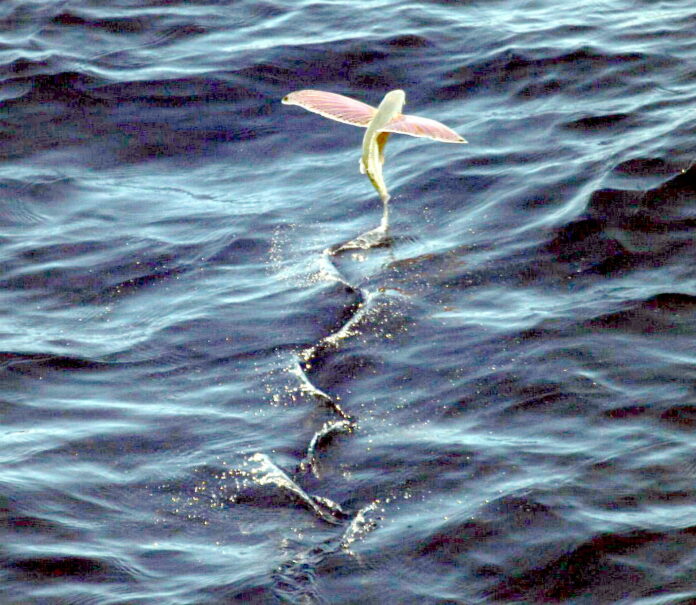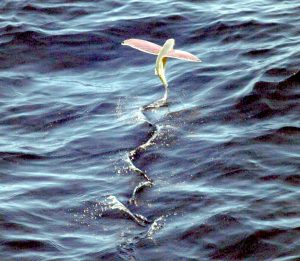
BY HARRY WEEKES

Fear can be a good thing. My last piece talked, in part, about the power of just standing still and linked it to an ancient predatorial strategy—the sit-and-wait predator. I also talked about standing still as one of my favorite techniques for not overdoing it in the tropics.
Well, put me on a sailboat, bobbing around in the water, and I start standing still for another reason—fear. Standing still is also the byproduct of extreme fright—one member of the famous fight-flight-or-freeze triumvirate.
When I am scared, my ability to take any energy away from pure survival is greatly diminished. Everything gets simplified, truncated, stripped down.
“Are you thirsty?”
“No.”
“Are you OK just standing there holding on to that railing?”
“Yes.”
“Are you going to move from that corner of the deck?”
“No.”
Even in this, though, fear also heightens the senses, keeps you alert, and sharpens your powers of observation.
So, there I was, bobbing up and down on a boat, doing my very best not to fall into the ocean, constantly scanning the sea for any kind of support. And then in came a silvery flash shooting across the waves.
“Some kind of impossible seabird,” I thought, even as I knew that was not quite right. Now, my mind had something else to work on, because even the simplest of discordances needs reconciliation.
Another silvery flicker and a beeline flying low across the waves. Then gone. Comparing this to the few seabirds I had seen up until that point, which were diving, dipping and swirling, confirmed that this was distinct.
We wrap the world into our biases and it often takes a while to deconstruct even the simplest ones. Here is something flying. Yes. And no. Then it clicks. A flying fish. Oh, it’s a flying fish. “Hey. Look! Flying fish!”
Of course, flying fish don’t fly. They glide. They race across the top of the ocean, then explode into the air, spread their elongated pectoral fins and soar in a line that keeps them low to the water, but in the air for as much as 600 feet. In other words, they can glide for a really, really long time. Long enough that these little oceanic shooting stars can emerge, you can yell, point them out, and others can see them, which was a distracting behavior I gladly added to my “clutching the rigging” repertoire.
These little fish take to the air (something which in and of itself is amazing to think about) as a different response to fear. They are chased and eaten by billfish, some of the ocean’s great athletes. They take to the air in flight mode. In comparing our two responses, mine seemed a lot less elegant, but diving into the ocean was definitely not my next move.
Harry Weekes is the founder and head of school at The Sage School in Hailey. This is his 47th year in the Wood River Valley, where he lives with his wife Hilary and their three kids—Georgia, Penelope and Simon—a nice little flock.


